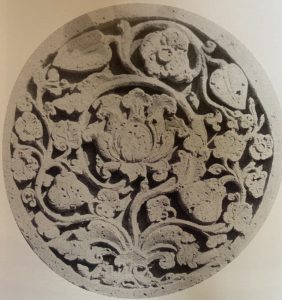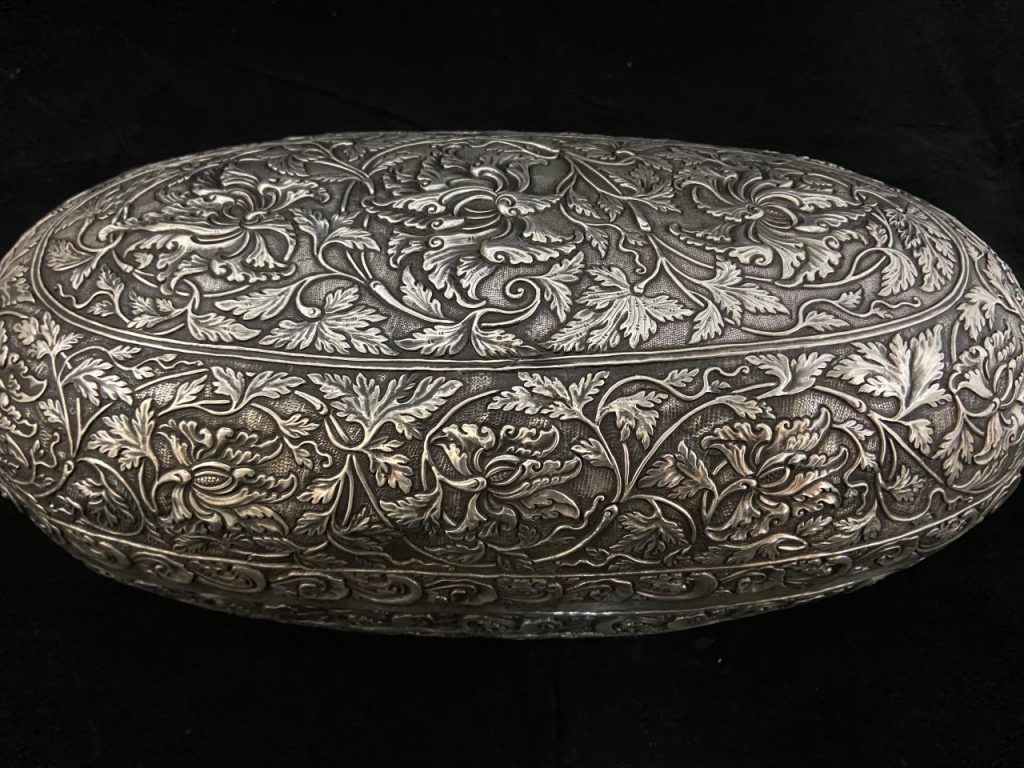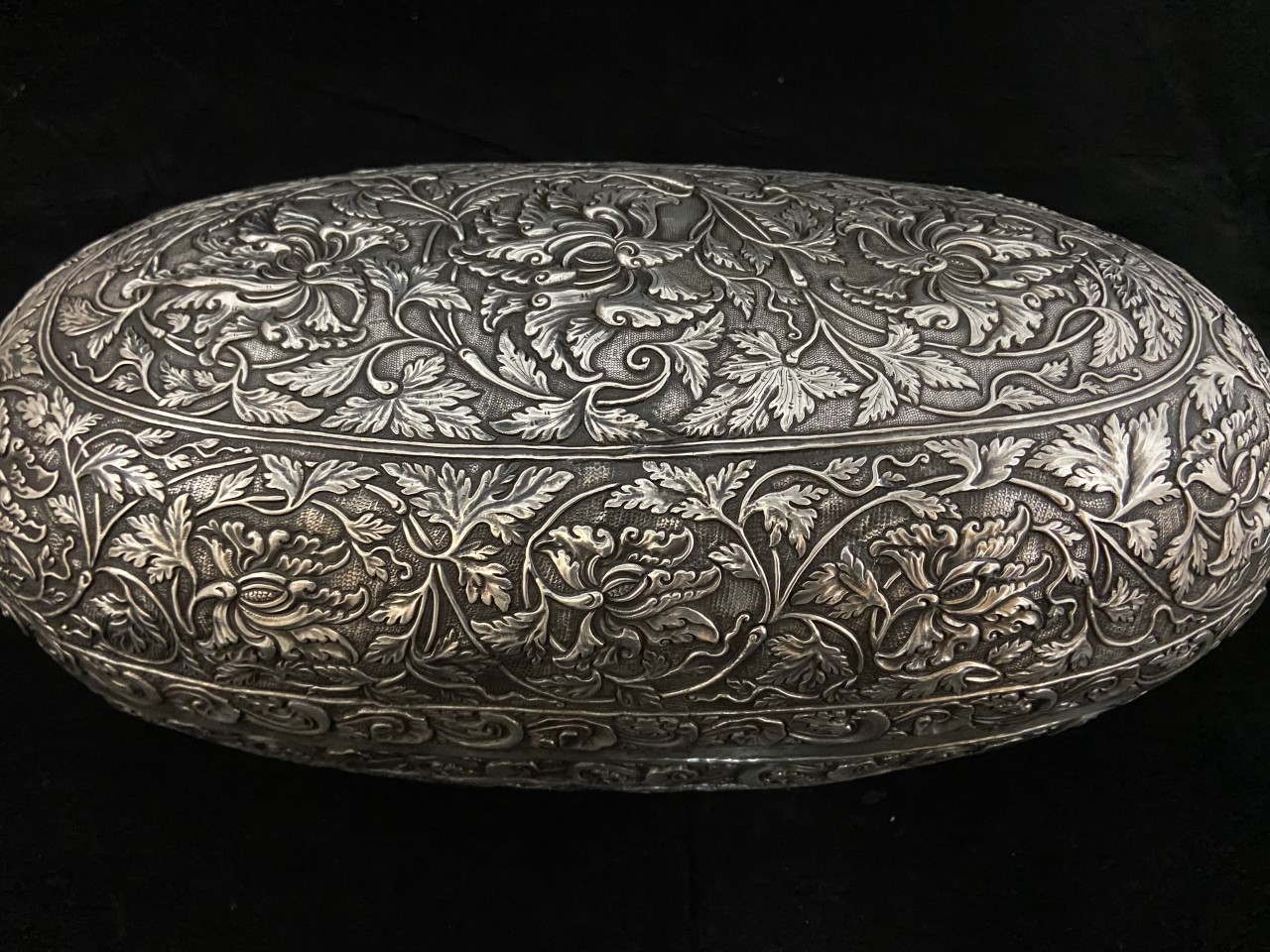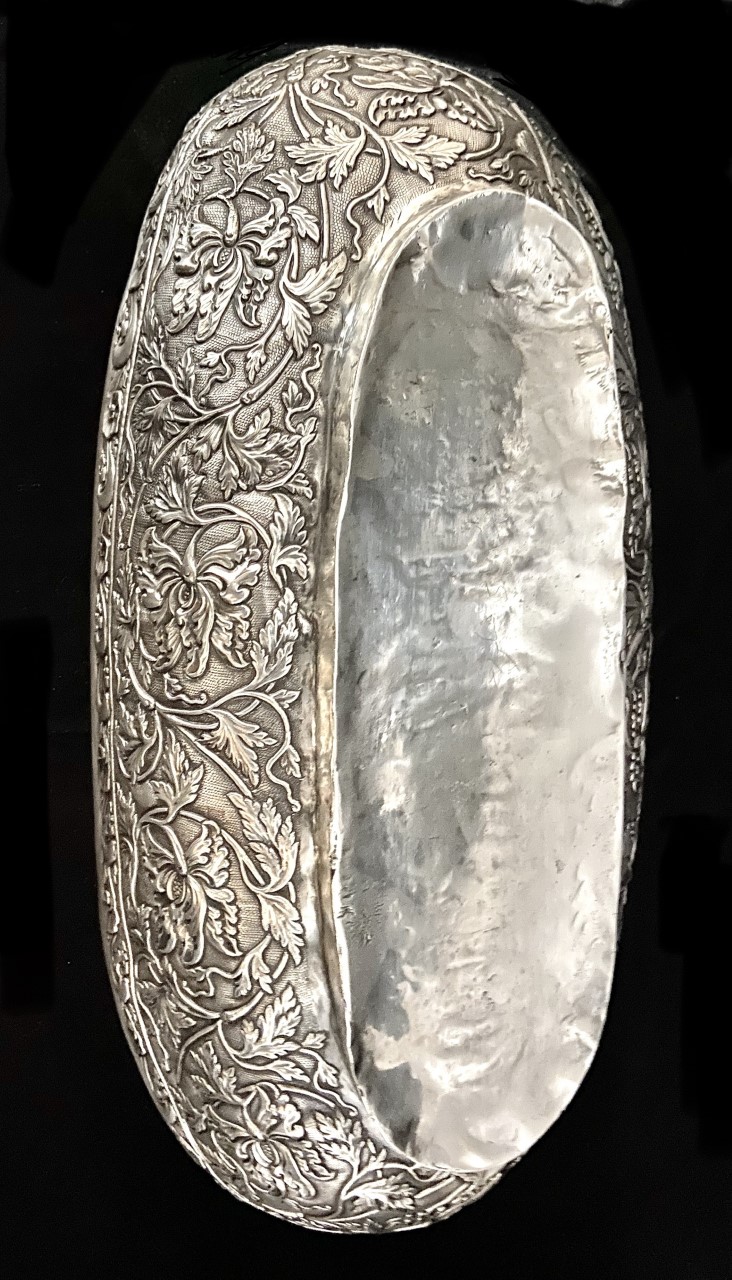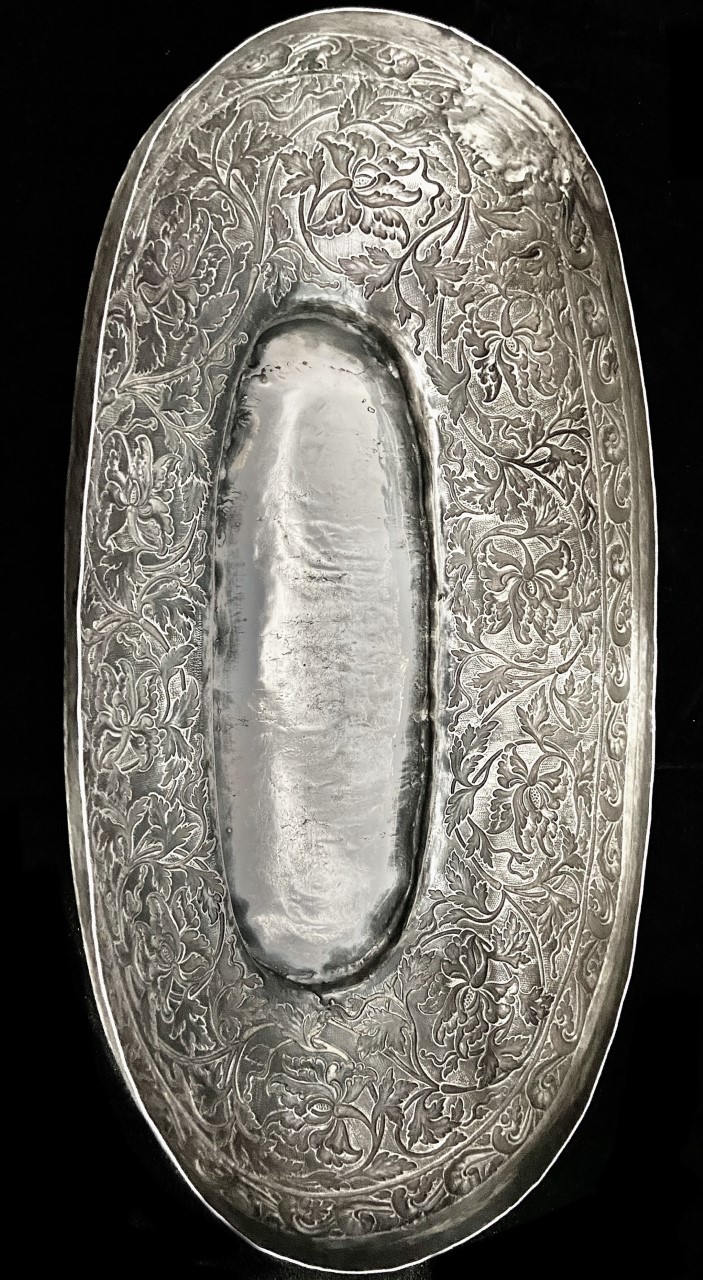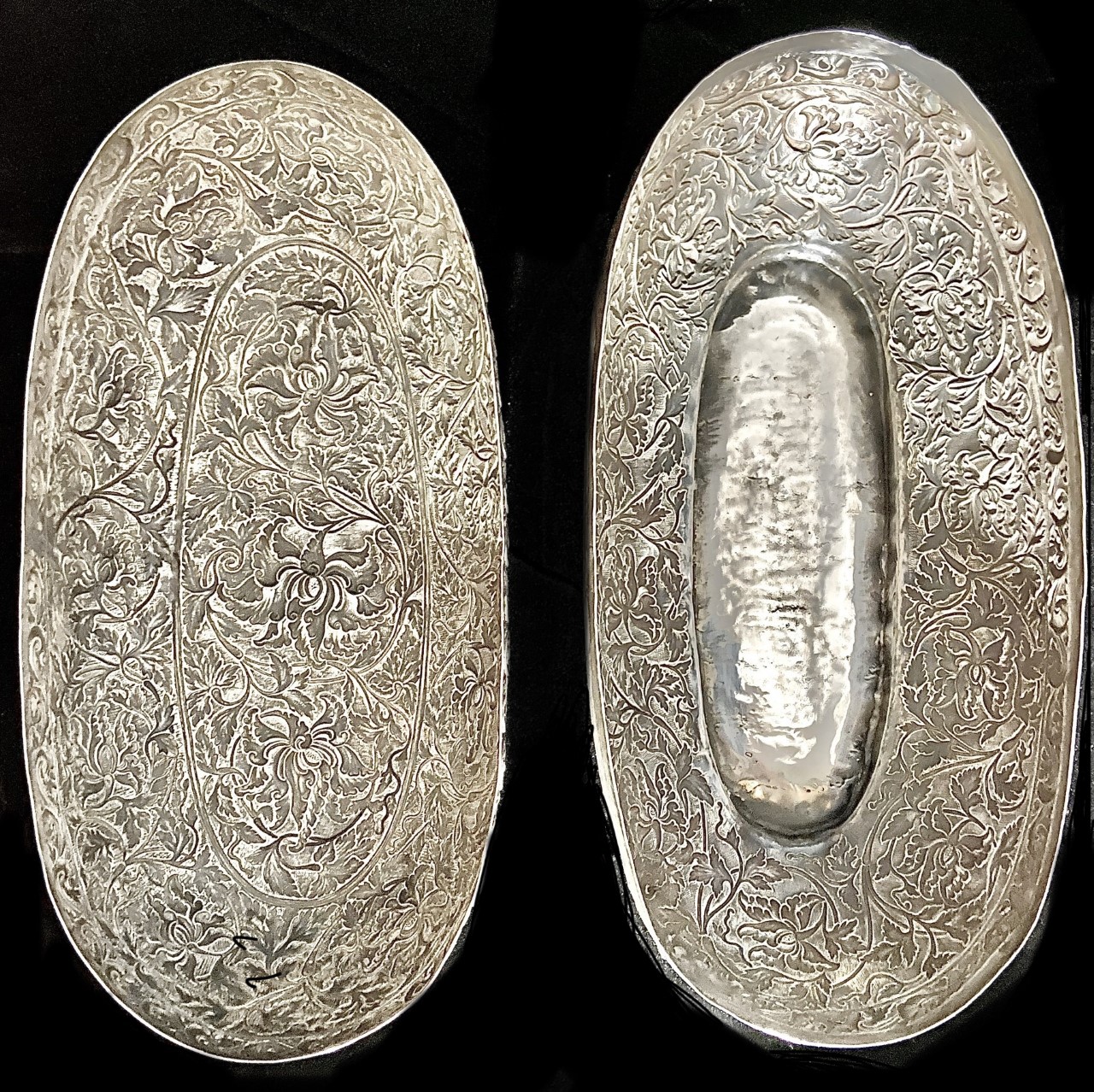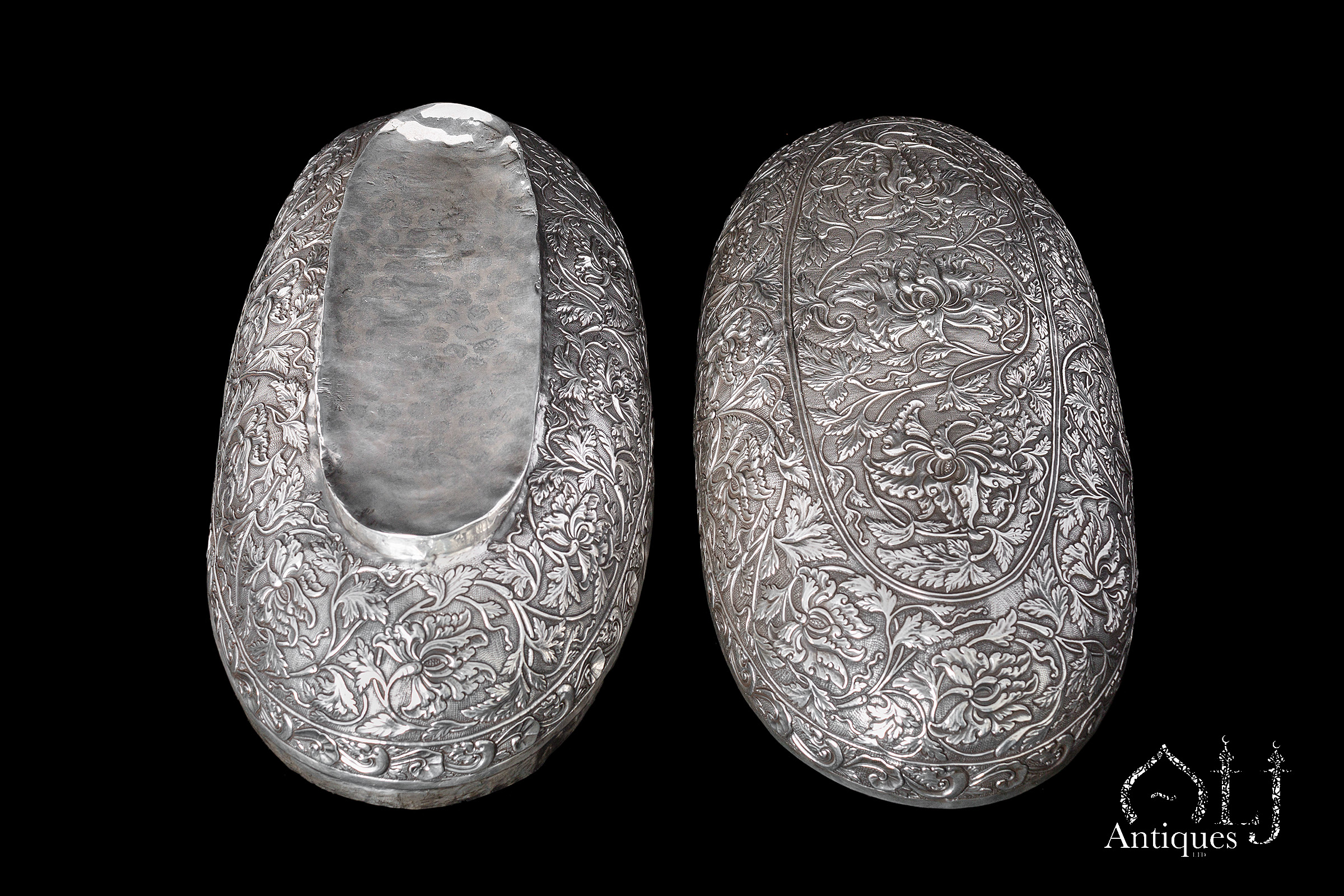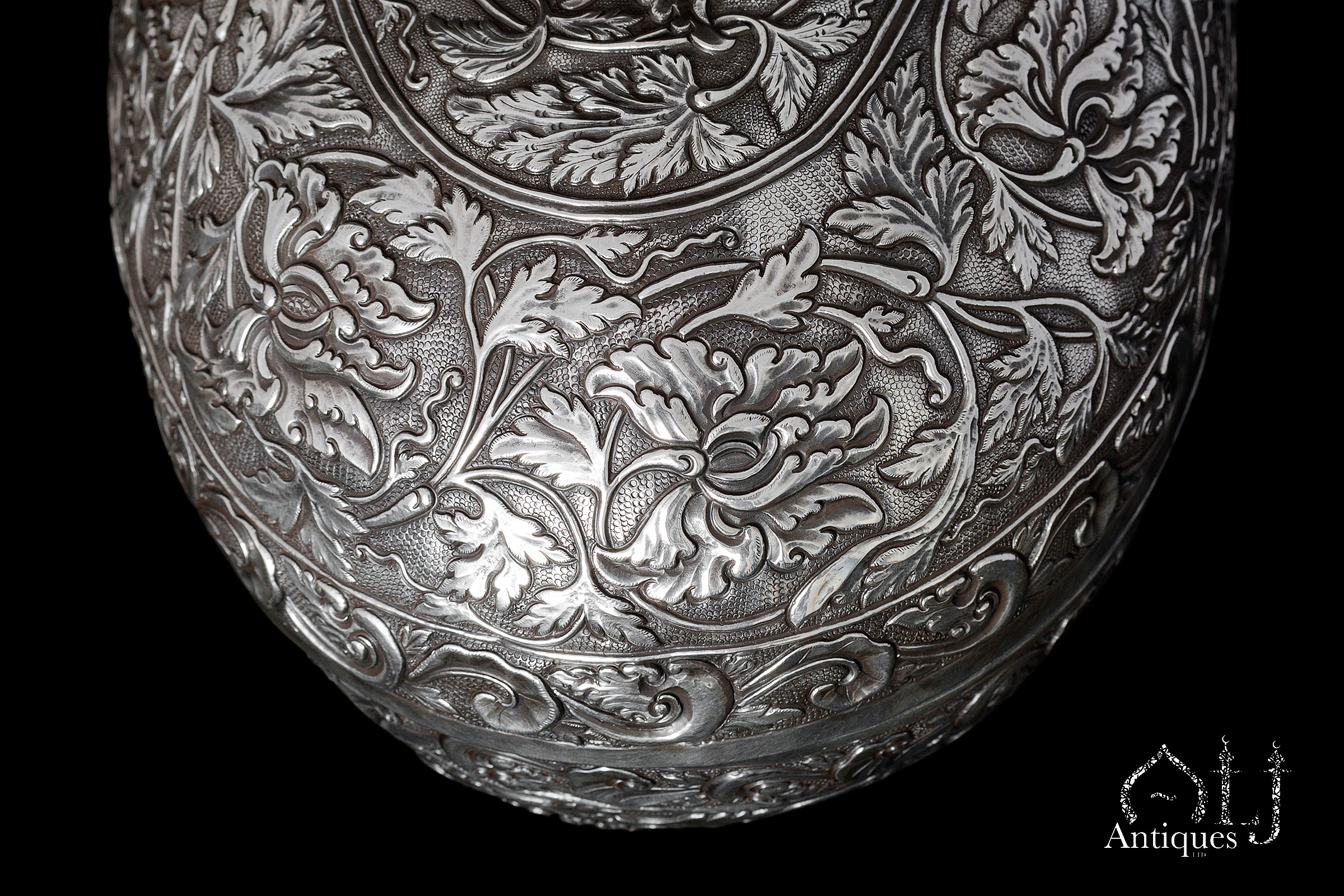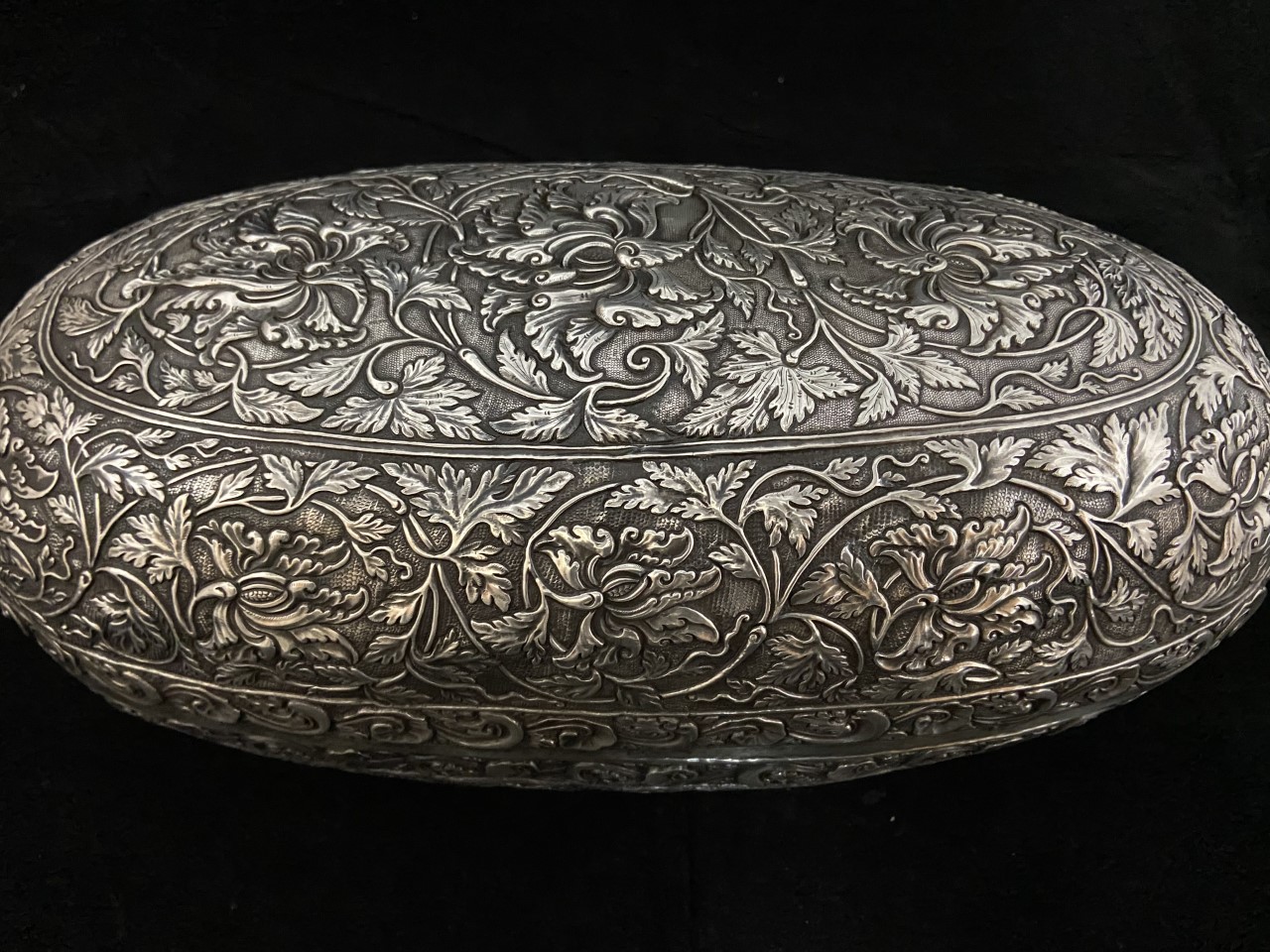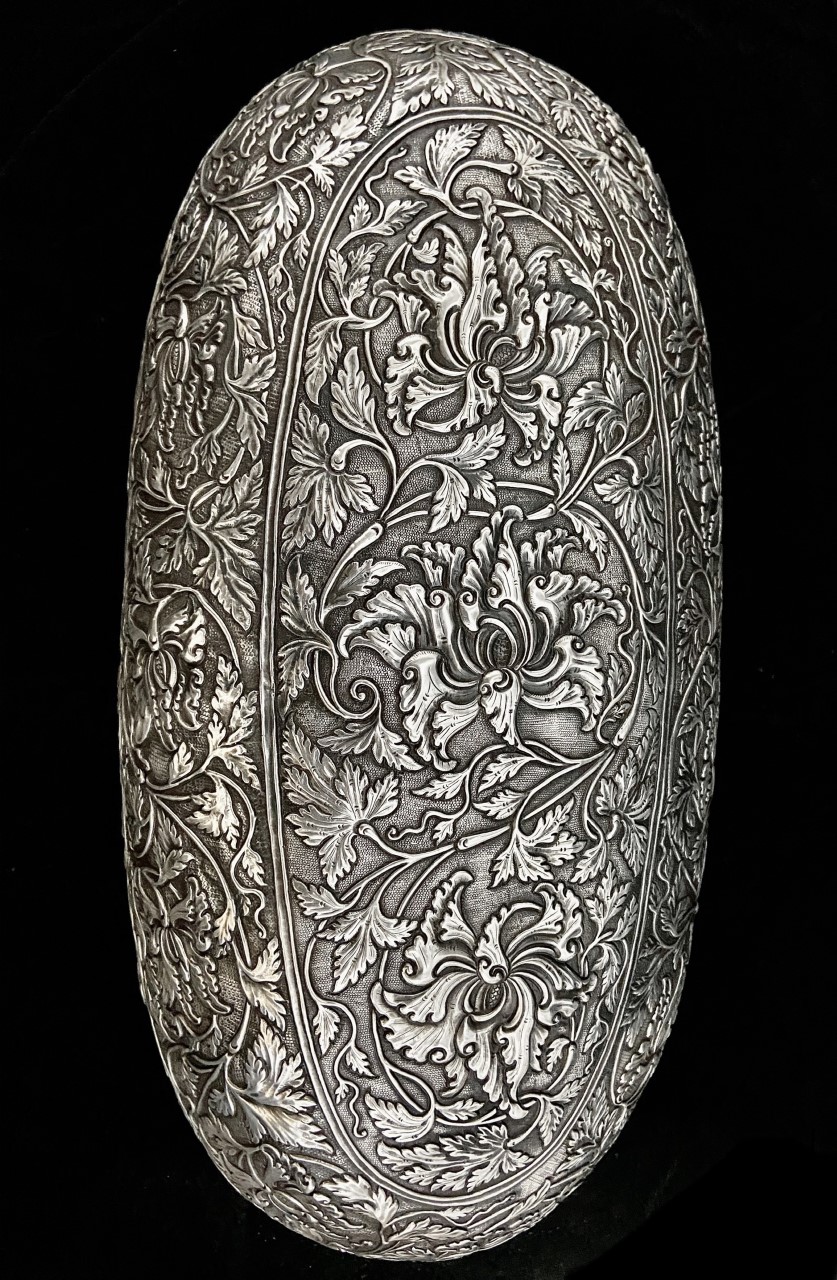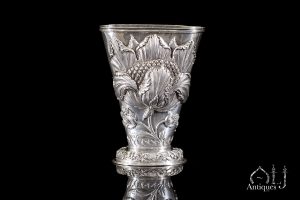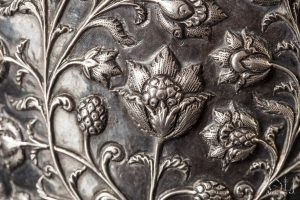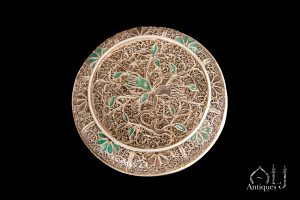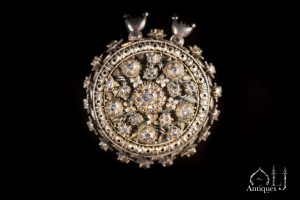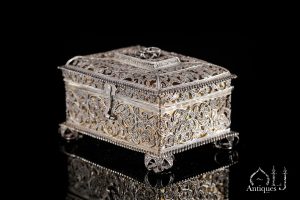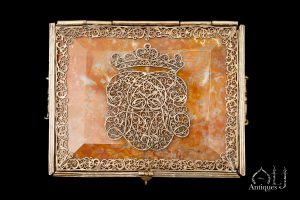Description
During the 17th. and at the beginning of the 18th. Centuries magnificent quality works of art and luxurious usable objects of exceptionally high quality were commissioned and made by very talented artisans mainly working at the Royal courts, the minerals used were usually out of precious metals such as in gold and silver carefully executed for the Indonesian Royal family and also were gifted by the Indonesian Royal Family to dignitaries, the wealthy elite and the very high ranking individuals in the Indonesian society and to important Europeans individuals working or visiting Indonesia.
The type of decoration used on this piece is typical and was very popular in the 17th-18th centuries, and was also fashionable among both the locals and the Europeans who were settling or working in Batavia and in Ceylon.
Different types and forms of large blossoming of lotus flowers and vegetation were executed on various types of materials and objects such as on furniture, textiles and metalwork and it was called the custwerk (Costal Wears) and believed to had been made by Indian craftsmen working in Batavia and Colombo.
This unique and very high-quality object was undoubtedly commissioned or made as a statement and a memorable piece for a Royal Member or probably a personal property to the household of the Sultan himself.
Considering the fact that usually fine Malay silver artifacts are usually made of fine thin sheet of hammered silver, therefore after the passing of time and due to too much handling and the constant use of such items, this makes them to more likely to be prone to get damaged, therefore taking in consideration the age and the large size of our current lot and despite the fact that there is an unnoticeable little later repair, undoubtedly the survival of this item is actually something really remarkable.
Our Betel nut container is of an oblong oval shape, the overall container had been unusually designed in the form of a watermelon, this form of the watermelon is commonly known as the Georgia Rattlesnake shape.
The container is divided into two main identically shaped and decorated parts, once the upper lid of the container is been opened, the lid and the lower part of the container visually become as if the watermelon has been horizontally almost evenly cut into two parts and in order to increase the storage margin of the container the lower part is attached to a plane oval shaped raised base.
This monumental and rather very unusual Betel nut container is made to be well noticed and distinguished, the very high quality of silversmithing in repousse technique had been used on very fine thin sheet of silver, the piece is decorated with very large, delicate and bold designs of running scroll bands decorations and stems with leaves issuing rather beautiful and large blossoming Lotus flowers and buds designs.
Both the upper part of the base’s rim and the lower rim of the container’s lid are outlined with parallel lines the inside is decorated with alternating scroll leaves or waves shape motives.
n comparison with our current lot please see similar shaped boxes (Karaih) which were in fact made in much later periods, please see the gifts which were presented by members of the Indonesian Royal Family to members of the Dutch Royal Family such as gifts to Queen Emma, Queen Wilhelmina and the Princess Juliana.
Royal Gifts From Indonesia, Historical Bounds with the House Orange-Nassau (1600-1938) Historic Collection Trust, The Hague by Rita Wassing-Visser, Waanders Publishers, Zwolle, 1995, ISBN: 90-400-9729-5 geb.
Please see the following examples illustrated in pages 212 & 157.
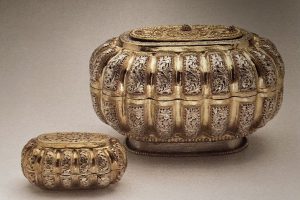
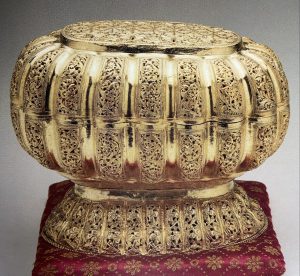
For similar blossoming lotus flower designs please see the following: Yogya Silver, Renewal of a Javanese Handicraft, By Pienke W.H. Kal, KIT Publishers, 2005, ISBN: 90-6832-183-8. Please see the images of the carved stone illustrated on page 79.
